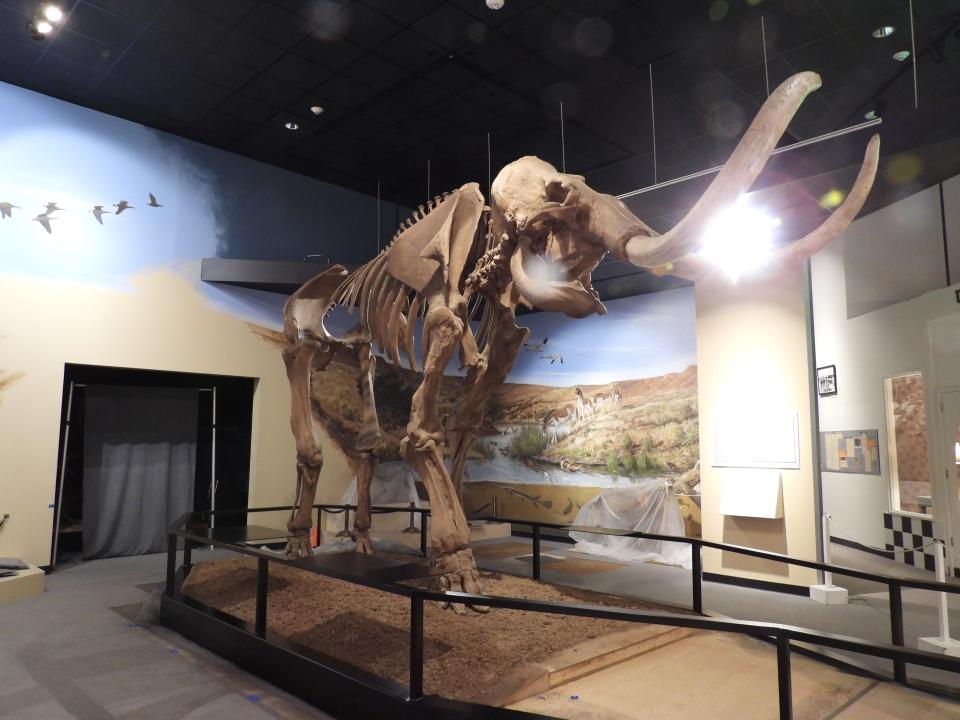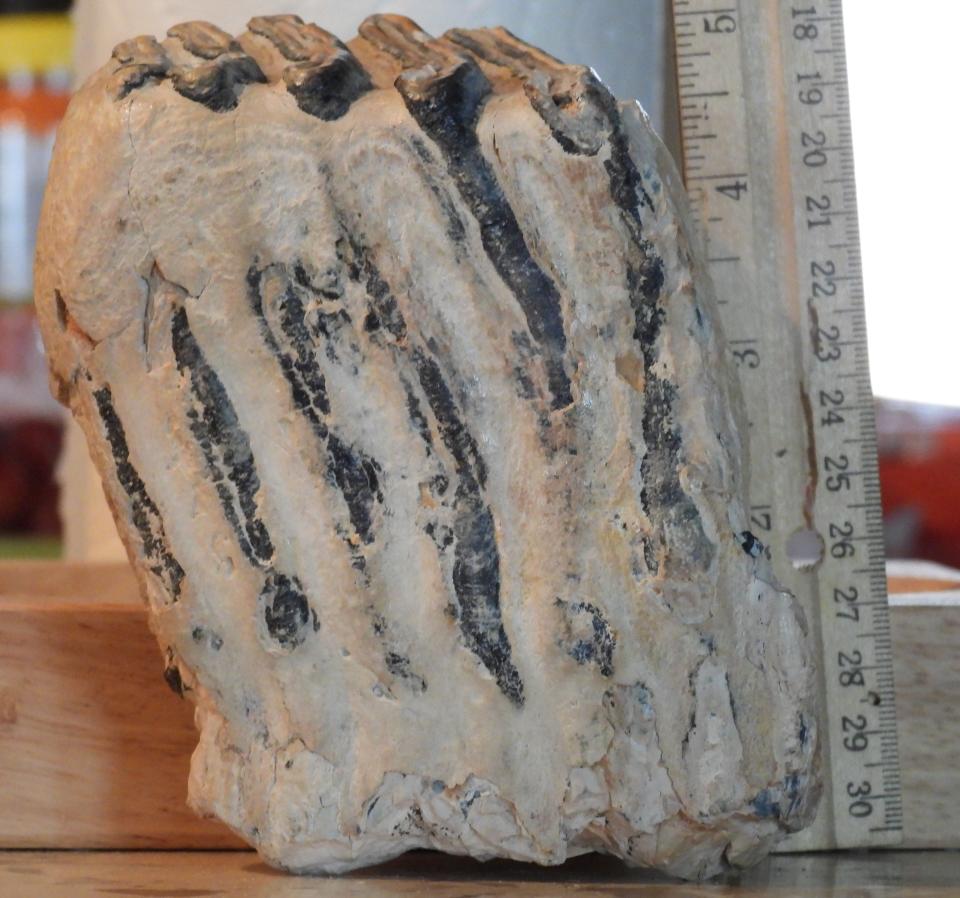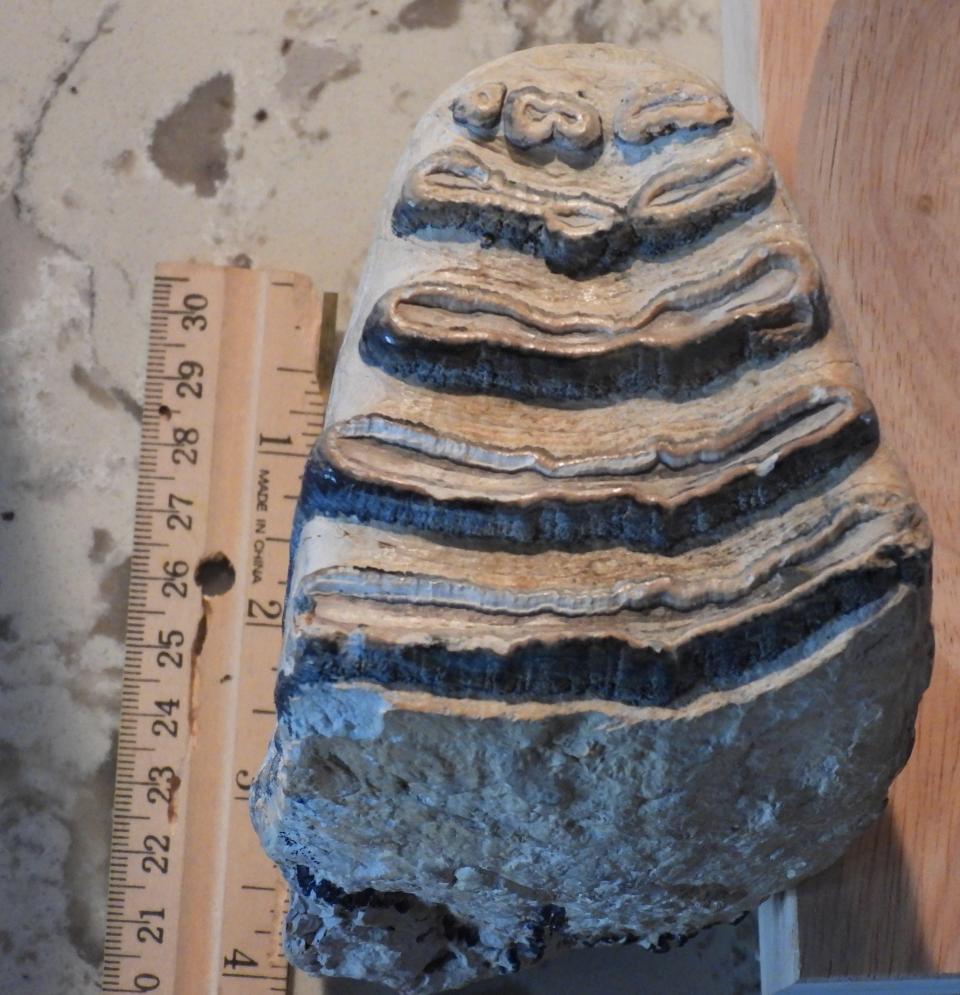Give me a home where the elephants roam: North Texas, Oklahoma were Pleistocene prairie
Many people are curious about the past. I remember reading H. G. Wells’ “The Time Machine” and thinking how interesting it would be if we really could find a way to travel back in time and observe our area as it was many years ago. So far, nobody has engineered a way to travel back in time; however, using a combination of good luck, diligent study, advanced technology and careful reconstruction, scientists working in the discipline of paleontology (the study of ancient life) can give us glimpses of our North Texas and Southwestern Oklahoma environments during the last Ice Age.
Once upon a time 2.5 million years ago
The term Ice Age is deceptive when considering geological and biological clues of our area environments from approximately 2.5 million years ago until 10,000 - 12,000 years before the present era (BPE). Most of us probably envision a landscape dominated by huge glaciers, ice sheets, snow, blizzards, and very cold temperatures. However, within this period of time (commonly referred to as the Pleistocene Epoch), there were several warmer periods (known as interglacials), during which the ice melted and retreated, only to be followed by periods of colder temperatures (called glacials) when the glaciers returned and extended southward into North America.
During this time of freezing and thawing, some areas/regions remained ice-free and served as refuges for many species of animals and plants. In fact, throughout this entire time, our regions of Texas and Oklahoma were never homes of extensive glaciers and/or ice and our environments were likely wetter with cooler, but largely stable, year-round temperatures. Because of these prevailing environmental conditions, North Texas and Southwestern Oklahoma were home to many species of plants and animals that no longer occur in our area or subsequently became extinct.

Using paleontological studies and fossil remains from our surrounding areas, let’s step into our mind’s time machine and take a trip backward to about 25,000 years BPE. As we step out of the time machine and glance around we’ll see a unique, steppe and/or savannah environment and prairie quite different from the present-day prairie.
Wetter and cooler conditions have created more marsh environments with sedges, cattails, and other water tolerant species and upland areas have mottes of trees such as oaks, junipers, maples, pines, and perhaps even spruces intermixed with sagebrush and numerous grasses. Our rivers and streams flow faster than the present day and their banks include trees such as chestnut, hickory, birch, elm, and alder. Our region resembles parkland habitats found in central Africa and, at least superficially, some areas found in (for instance) the state of South Dakota: yet also include species of plants and animals which have expanded their ranges from the west, south, and east.

Some familiar faces
As we look for Ice Age animals, we see many familiar species. Inhabitants of the prairie/upland areas include pocket mice, harvest mice, deer mice, pocket gophers, rabbits, ground squirrels, prairie dogs, and woodrats. Predators include skunks, badgers, gray wolves, and red wolves. Some familiar, larger, grazing animals include deer, antelope, horses, and, perhaps, more than one species of Bison: including the familiar B. bison but also B. latifrons (giant bison), B. priscus (steppe bison), and B. antiquus (a more ancient version of the modern bison).
And some not so familiar critters
So far, and with a few exceptions, you might be thinking “This was hardly worth the trip. What’s the big deal about this Ice Age stuff?” However, before making a hasty conclusion, let’s go to some of the marshy, streamside, and wooded environments of our Pleistocene region. As we walk around the marshes, playas, stream and river edges, and wooded areas we see some familiar animals, such as beaver, muskrat, and cotton rats; but these areas are also inhabited by rice rats, bog lemmings, and voles (species which no longer occur very close to our region). We also encounter a species of tapir (the Vero Tapir) forging along the marsh, stream, and river edges and we need to be very observant and careful because we don’t want to bump into a jaguar that might be stalking the tapir (modern descendents of both are only found in Southern Mexico and parts of Central and South America)!

Massive mammoths roaming the plains
If this is piquing your interest, let’s hang around a little longer and gaze back into the plains/savannah areas. Besides the herds of antelope, bison, and horses out here, there are other large, unique, animals. We see Giant Ground Sloths roaming the plains with their slow, shuffling gaits. The ground sloths feed upon grasses, shrubs, and perhaps even roots that they dig up with their well-clawed front feet. They can afford to be slow because, under their skin, are small bones called osteoderms which form a type of chain-mail armor over the sloth’s neck, shoulders, and back. These sloths truly are giants, reaching lengths of nine to ten feet, and, using their long tails, are able to stand on their hind legs and reach high foliage. Also roaming the grasslands are camels which are larger than modern Dromedary Camels; but, as we continue to gaze out on the Plains, we catch sight of the truly gigantic denizens of these environs: the Columbian/Imperial Mammoths!
These mammoths are larger than African Elephants. Columbian Mammoths are 14 feet high at the shoulder with a high, domed forehead and downward-sloping profile from shoulder to tail. Tusks are very long (almost twice as-long-as those of African Elephants) and curve out, up, and backward and ears are much smaller than those of African elephants. Columbian Mammoths are less hairy than their northern relatives: the Woolly Mammoths. The herd we see is led by a dominant matriarch and is feeding upon the grasses, sedges, leaves, and browse from bushes, and even cacti. Although surprising to us, these mammoth herds are common throughout our region.
However, now it’s time to re-enter our time machine and return to the present. Perhaps we will return to these earlier times; but for now, maybe it is enough to know that at one time…the deer, antelope, (and camels and elephants) really DID play on our prairies!
This article originally appeared on Wichita Falls Times Record News: North Texas, Oklahoma were a Pleistocene prairie

